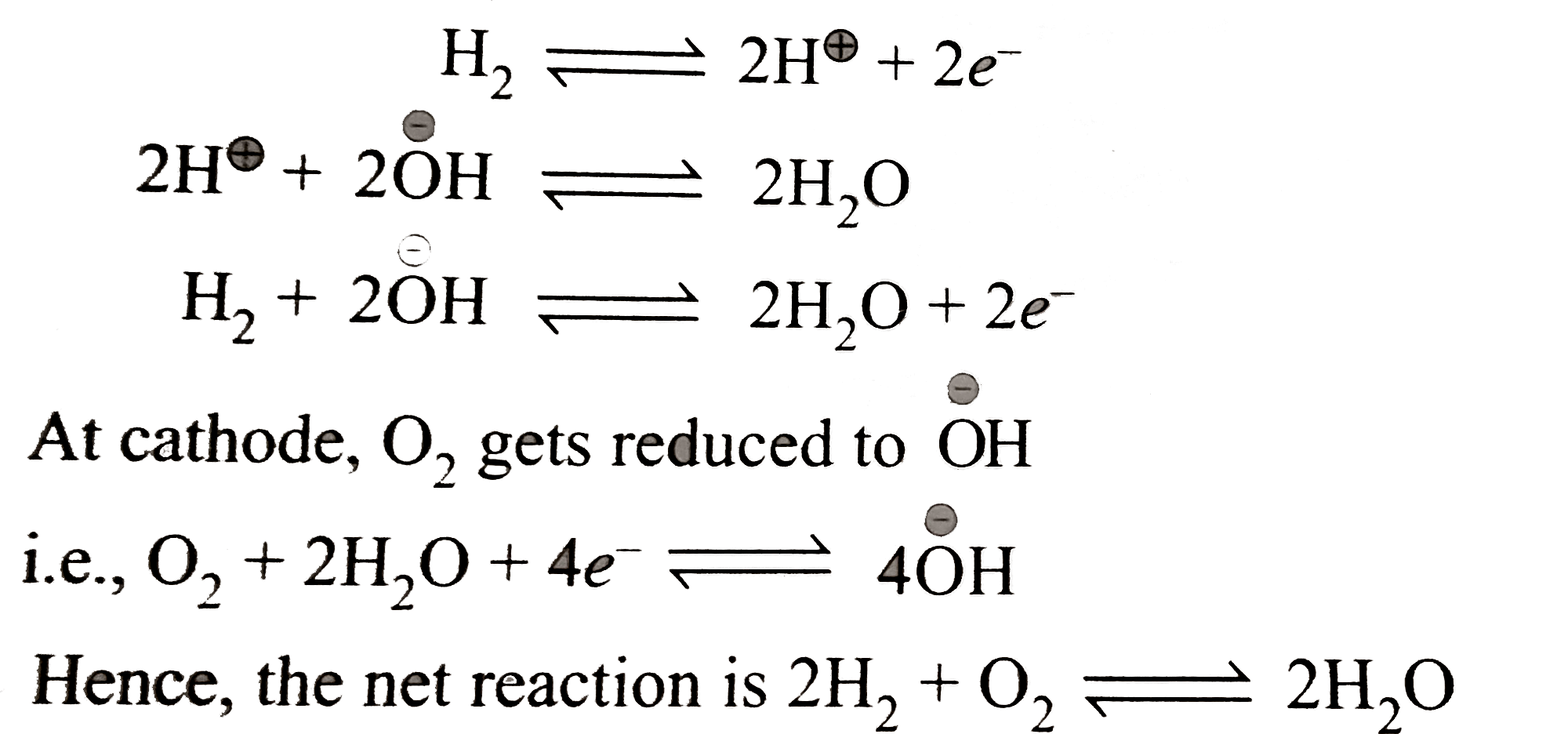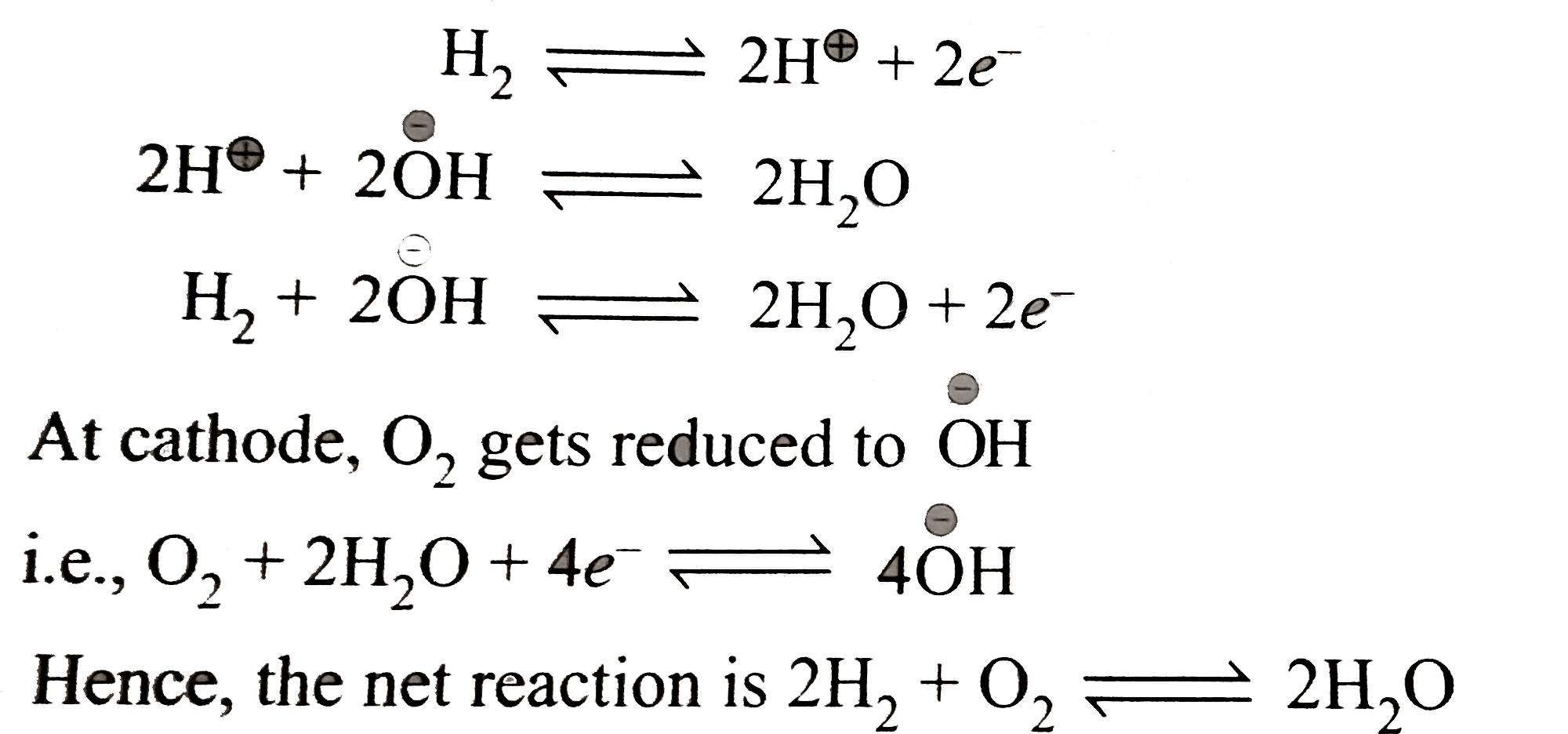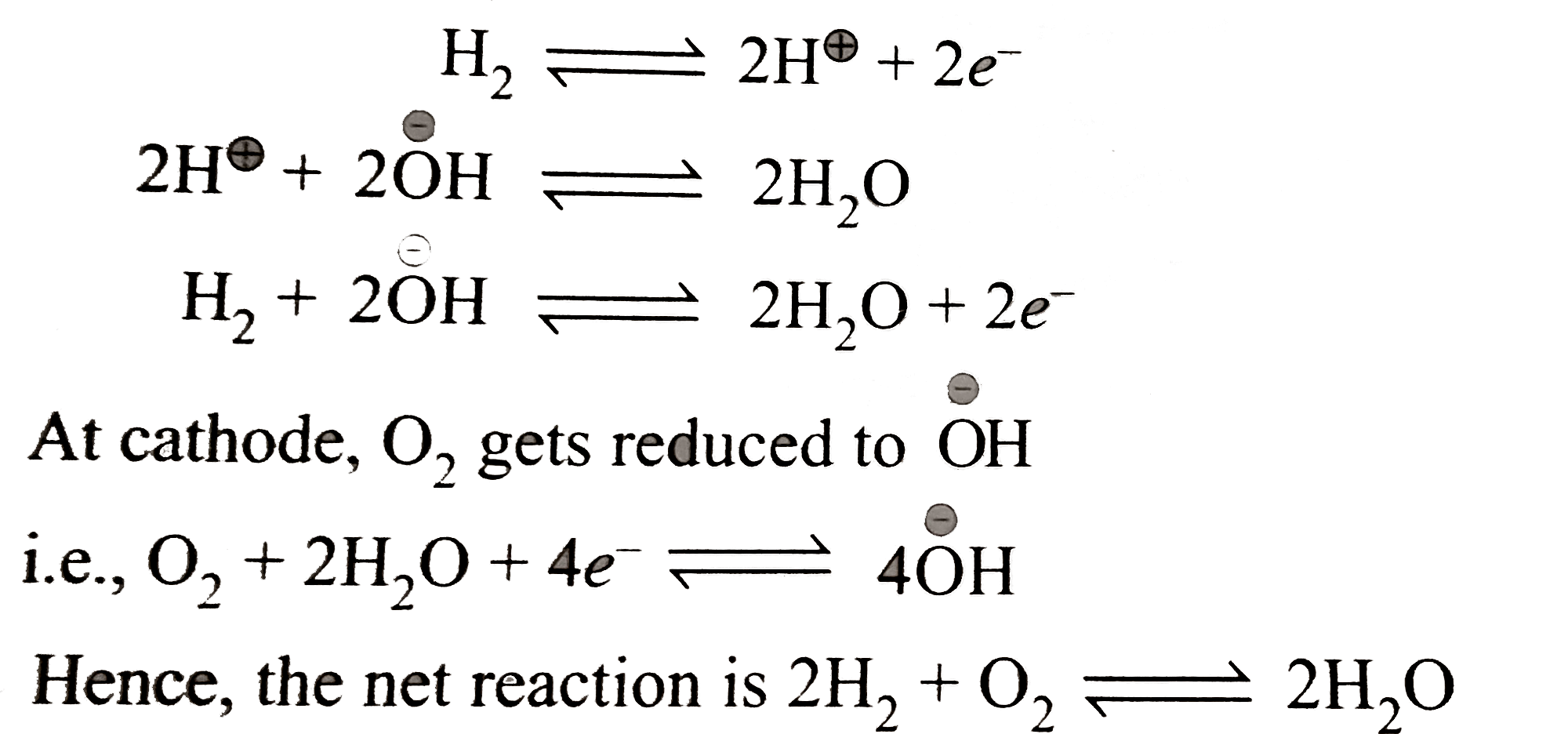In a hydrogen-oxygen fuel cell, combustion of hydrogen occurs to :
generate heat
remove adsorbed oxygen from electrode surfaces
produce high purity water
create potential difference between the two electrodes
2H2+4OH−(aq)→4H2O(1)+4e
O2(g)+2H2O(I)+4e→4OH−(aq)–––––––––––––––––––––––––––––––––––––––––
Fuell cell involves direct convrsion of chemical energy to electricity energy.
Topper's Solved these Questions
- BOOK - VMC MODULES ENGLISHCHAPTER - ELECTROCHEMISTRYEXERCISE - JEE Advanced (Archive)76videos
ELECTROCHEMISTRY
- BOOK - VMC MODULES ENGLISHCHAPTER - ELECTROCHEMISTRYEXERCISE - FUNDAMENTAL50videos
ELECTROCHEMISTRY
- BOOK - VMC MODULES ENGLISHCHAPTER - ELECTROCHEMISTRYEXERCISE - Level-265videos
ELECTROCHEMISTRY
- BOOK - VMC MODULES ENGLISHCHAPTER - CLASSIFICATION OF ELEMENTS AND PERIODICITY IN PROPERTIES EXERCISE - JEE ADVANCE (ARCHIVE)30videos
CLASSIFICATION OF ELEMENTS AND PERIODICITY IN PROPERTIES
- BOOK - VMC MODULES ENGLISHCHAPTER - ENVIRONMENTAL CHEMISTRYEXERCISE - JEE Main (Archive)39videos
ENVIRONMENTAL CHEMISTRY
Similar Questions
Purpose of hydrogen -oxygen fuel cell is to
View SolutionFuel cells : Fuel cells are galvanic cells in which the chemical energy of fuel cell is directly converted into electrical energy. A type of fuel cell is a hydrogen − oxygen fuel cell. It consists of two electrodes made up of two porous graphite impregnated with a catalyst ( platinum, silver, or metal oxide ). The electrodes are placed in aqueous solution of NaOH . Oxygen and hydrogen are continuously fed into the cell. Hydrogen gets oxidized to H⊕ which is neutralized by c−OH,i.e., anodic reaction.

At cathode, O2 gets reduced to c−OH

Hence, the net reaction is
The overall reaction has
ΔH=−285.6kJmol−1 and ΔG=−237.4kJmol−1 at 25∘C
If the cell voltage is 1.23V for the H2−O2 fuel cell and for the half cell :View SolutionFuel cells : Fuel cells are galvanic cells in which the chemical energy of fuel cell is directly converted into electrical energy. A type of fuel cell is a hydrogen − oxygen fuel cell. It consists of two electrodes made up of two porous graphite impregnated with a catalyst ( platinum, silver, or metal oxide ). The electrodes are placed in aqueous solution of NaOH . Oxygen and hydrogen are continuously fed into the cell. Hydrogen gets oxidized to H⊕ which is neutralized by c−OH,i.e., anodic reaction.

At cathode, O2 gets reduced to c−OH

Hence, the net reaction is
The overall reaction has
ΔH=−285.6kJmol−1 and ΔG=−237.4kJmol−1 at 25∘C
If the cell voltage is 1.23V for the H2−O2 fuel cell and for the half cell :View SolutionFuel cells : Fuel cells are galvanic cells in which the chemical energy of fuel cell is directly converted into electrical energy. A type of fuel cell is a hydrogen − oxygen fuel cell. It consists of two electrodes made up of two porous graphite impregnated with a catalyst ( platinum, silver, or metal oxide ). The electrodes are placed in aqueous solution of NaOH . Oxygen and hydrogen are continuously fed into the cell. Hydrogen gets oxidized to H⊕ which is neutralized by c−OH,i.e., anodic reaction.

At cathode, O2 gets reduced to c−OH
Hence, the net reaction is
The overall reaction has
ΔH=−285.6kJmol−1 and ΔG=−237.4kJmol−1 at 25∘C
What is the value of ΔSc− for the fuel cell at 25∘C?View SolutionFuel cells : Fuel cells are galvanic cells in which the chemical energy of fuel cell is directly converted into electrical energy. A type of fuel cell is a hydrogen − oxygen fuel cell. It consists of two electrodes made up of two porous graphite impregnated with a catalyst ( platinum, silver, or metal oxide ). The electrodes are placed in aqueous solution of NaOH . Oxygen and hydrogen are continuously fed into the cell. Hydrogen gets oxidized to H⊕ which is neutralized by c−OH,i.e., anodic reaction.

At cathode, O2 gets reduced to c−OH
Hence, the net reaction is
The overall reaction has
ΔH=−285.6kJmol−1 and ΔG=−237.4kJmol−1 at 25∘C
Suppose the concentration of hydroxide ioin in the cell is doubled, then the cell voltage will beView SolutionIn carbon-hydrogen-oxygen compounds :
View SolutionFuel cells : Fuel cells are galvanic cells in which the chemical energy of fuel cell is directly converted into electrical energy. A type of fuel cell is a hydrogen − oxygen fuel cell. It consists of two electrodes made up of two porous graphite impregnated with a catalyst ( platinum, silver, or metal oxide ). The electrodes are placed in aqueous solution of NaOH . Oxygen and hydrogen are continuously fed into the cell. Hydrogen gets oxidized to H⊕ which is neutralized by c−OH,i.e., anodic reaction.

At cathode, O2 gets reduced to c−OH
Hence, the net reaction is
The overall reaction has
ΔH=−285.6kJmol−1 and ΔG=−237.4kJmol−1 at 25∘C
What is the value of ΔSc− for the fuel cell at 25∘C?
a.−1600JK−1
b.−160JK−1
c.160JK−1
d.1600JK−1View SolutionHow does hydrogen occur in nature?
View SolutionThe number of faradays required to produce one mole of water from hydrogen-oxygen fuel cell containing aqueous alkali as electrolyte is:
View SolutionDiscuss the working of hydrogen – oxygen fuel cell. What are the advantages of using this fuel cell?
View Solution

